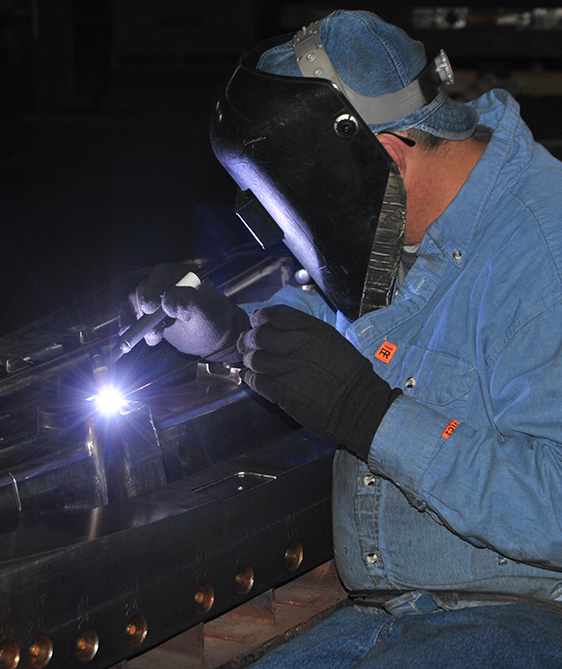Tool and Die Welding (TIG Welding)

TIG welding is a staple welding process critical to the performance of tools, dies, molds and inserts. The TIG welding process allows operators to control heat input and the amount and location of weld metal deposited. Tool and die welding typically involves building a larger surface area so that it can be re-machined to desired tolerances.
Benefits of TIG welding:
- Produces very high-quality welds
- Is easily applied to thin materials
- Welds can be made with or without filler metal
- Provides precise control of welding variables
(i.e. heat, filler material) - Welding yields low distortion
- Leaves no slag or splatter
MIG Welding
Gas metal arc welding (GMAW or MIG welding) is an electric arc welding process that uses a spool of continuously fed wire. MIG Welding can be used to join long stretches of metal without stopping, and can be used on all thicknesses of steels, aluminum, nickel, as well as stainless steel. We utilize our MIG welding capabilities for custom steel fabrication to customer print specifications, manufacturing products such as industrial carts, tables, racks and weldments.
Benefits of MIG welding are:
- High quality welds can be produced much faster
- Since a flux is not used, there is no chance for the entrapment of slag in the weld metal, resulting in high quality welds
- The gas shield protects the arc so that there is very little loss of alloying elements (only minor weld spatter is produced)
- MIG welding is versatile and can be used with a wide variety of metals and alloys
- The MIG welding process can be operated several ways, including semi and fully automatic
